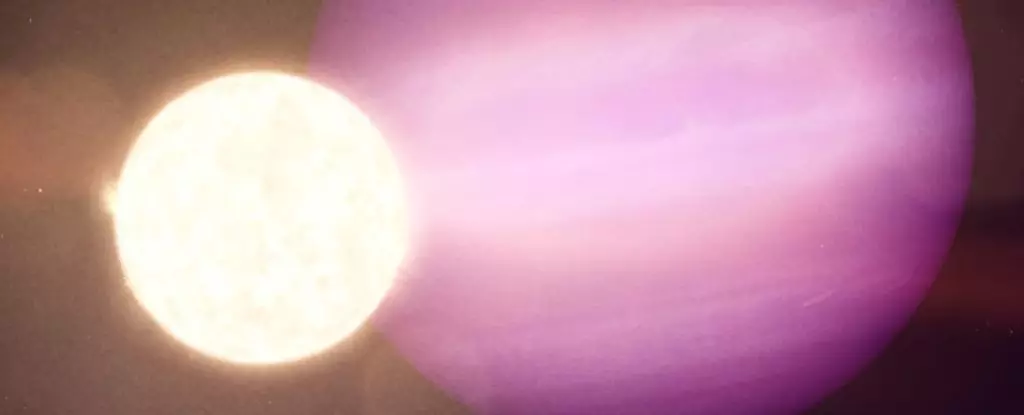In 2020, astronomers embarked on a journey of discovery when they identified WD 1856+534 b, an extraordinary gas giant orbiting a white dwarf star situated 81 light-years from Earth. This exoplanet, characterized as a “super-Jupiter,” possesses an astonishing mass approximately six times that of our solar system’s largest planet, Jupiter. However, it’s not just the size that has captivated the scientific community; WD 1856+534 b represents a crucial milestone in exoplanet research as the first known transiting planet to orbit a white dwarf—a mere remnant of a star’s life cycle—and this unique relationship compels us to reassess our understanding of planetary evolution.
The Power Behind JWST Observations
A significant breakthrough in our investigation of WD 1856+534 b came from a team of international astronomers utilizing the James Webb Space Telescope (JWST), specifically its Mid-Infrared Instrument (MIRI). This advanced technology enabled researchers to shed light on the coldest exoplanet ever documented, with a temperature hovering around 186 K (-87 °C; -125 °F). This level of detail was previously unattainable, marking a leap forward in direct imaging methods for characterizing exoplanets. What is particularly striking is the collaboration behind this research. Led by Mary Anne Limbach from the University of Michigan, the team included experts from numerous prestigious institutions, emphasizing the increasingly global effort to extend our reach into the cosmos.
Emerging Challenges in Exoplanet Observation
Observing exoplanets is fraught with challenges, primarily due to the blinding luminosity of their host stars, which can obscure the relatively dim light reflected or emitted from the planets themselves. This makes it particularly difficult to observe smaller, terrestrial planets, often relegating astronomers to focusing on larger gas giants with wide orbits. The report on WD 1856+534 b thus holds immense implications, suggesting that white dwarfs create a unique environment for direct imaging. The lower luminosity of these stellar remnants allows for a more favorable contrast, making the characterization of cooler exoplanets possible—offering hope for the discovery of potentially habitable conditions even near stellar remnants.
Implications for Planetary Survival and Habitability
The implications of studying planets like WD 1856+534 b extend beyond mere observational delight; they touch on fundamental questions about survival and habitability in a post-main-sequence universe. Current theories suggest that as stars evolve and expand into red giants, previously stable planetary systems can be severely disrupted. Understanding how planets navigate these tumultuous transformations provides critical insights into their migration patterns and the stability of their orbits. The research team highlighted that WD 1856+534 b’s close orbit challenges existing assumptions about how planets can endure such drastic changes around their stars’ late evolutionary stages.
The study foreshadows an exciting avenue of research for astrobiologists who are increasingly interested in whether habitable conditions can persist in the shadows of dying stars. Investigating planets orbiting WDs like WD 1856+534 b could illuminate the resilience of planetary systems and their ability to maintain conditions conducive to life, even in scenarios once deemed hostile.
The Path Ahead: Future Observations and Discoveries
Looking forward, the astronomers involved remain optimistic about further investigations of WD 1856+534 b with JWST. Future observations scheduled for 2025 aim not only to refine the understanding of this particular exoplanet but also to possibly identify additional planets orbiting the same star. Such discoveries could provide additional evidence of how WD 1856+534 b arrived at its current orbit, hinting at the migration histories of planets in systems where stability is often precarious.
Moreover, the anticipation surrounding the impending release of data from Webb’s Near-Infrared Spectrometer (NIRSpec) means that this area of research is destined for continuous evolution. Each new set of observations amplifies the excitement surrounding the field of exoplanetary science, which is now at the cusp of profound discoveries that can reshape our understanding of planetary systems and life beyond Earth. The dynamics of WD 1856+534 b, alongside further observations and data analysis, promise to usher in a new era of astrophysics—one in which the coldest of giants may unveil the hottest mysteries of the universe.


Leave a Reply